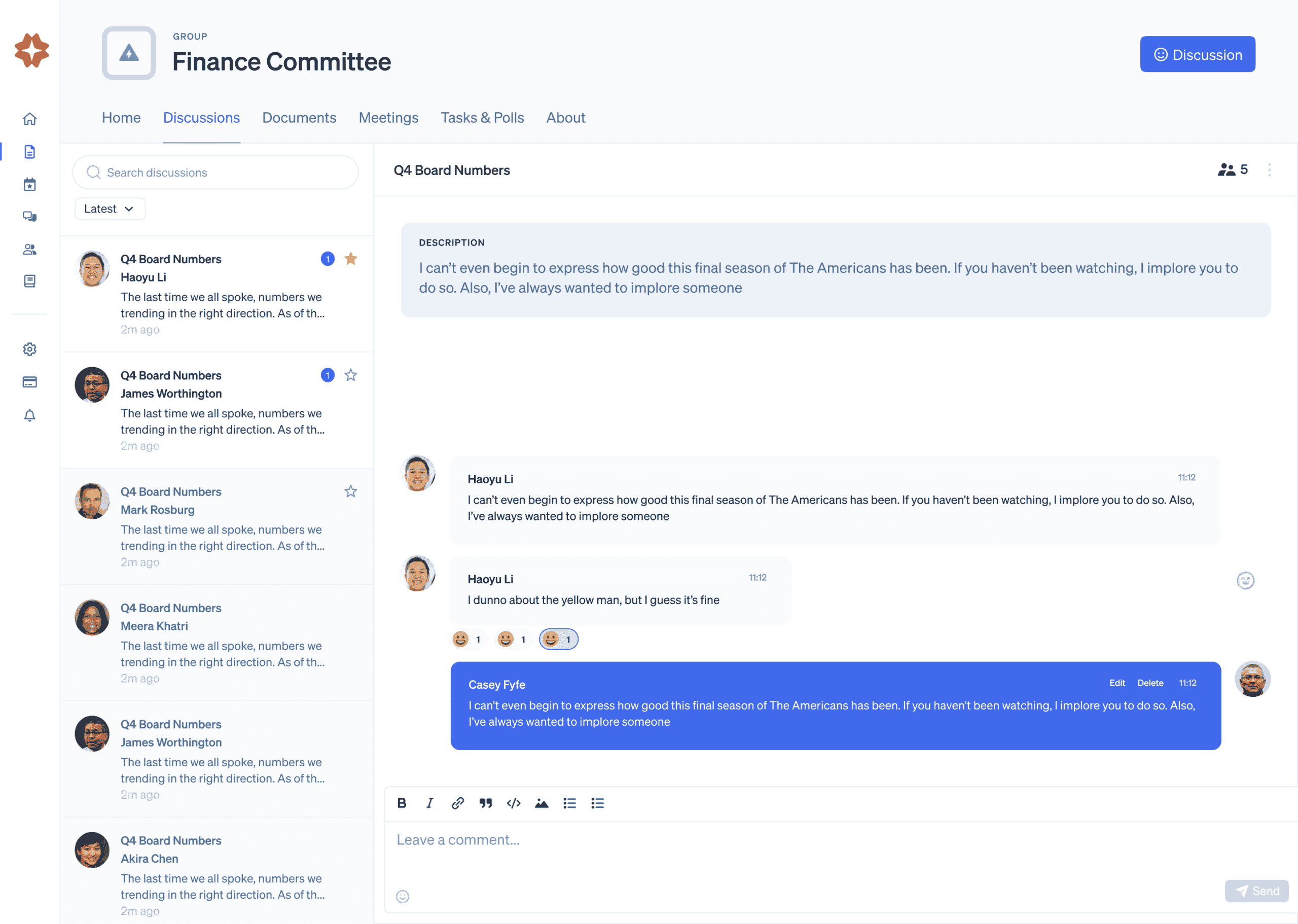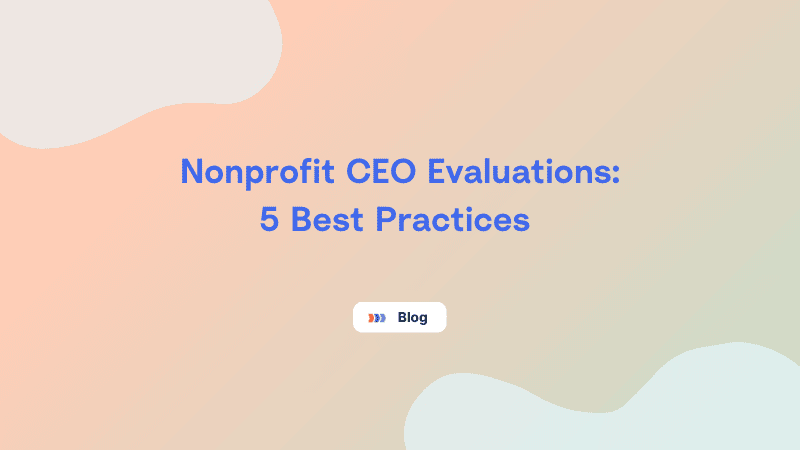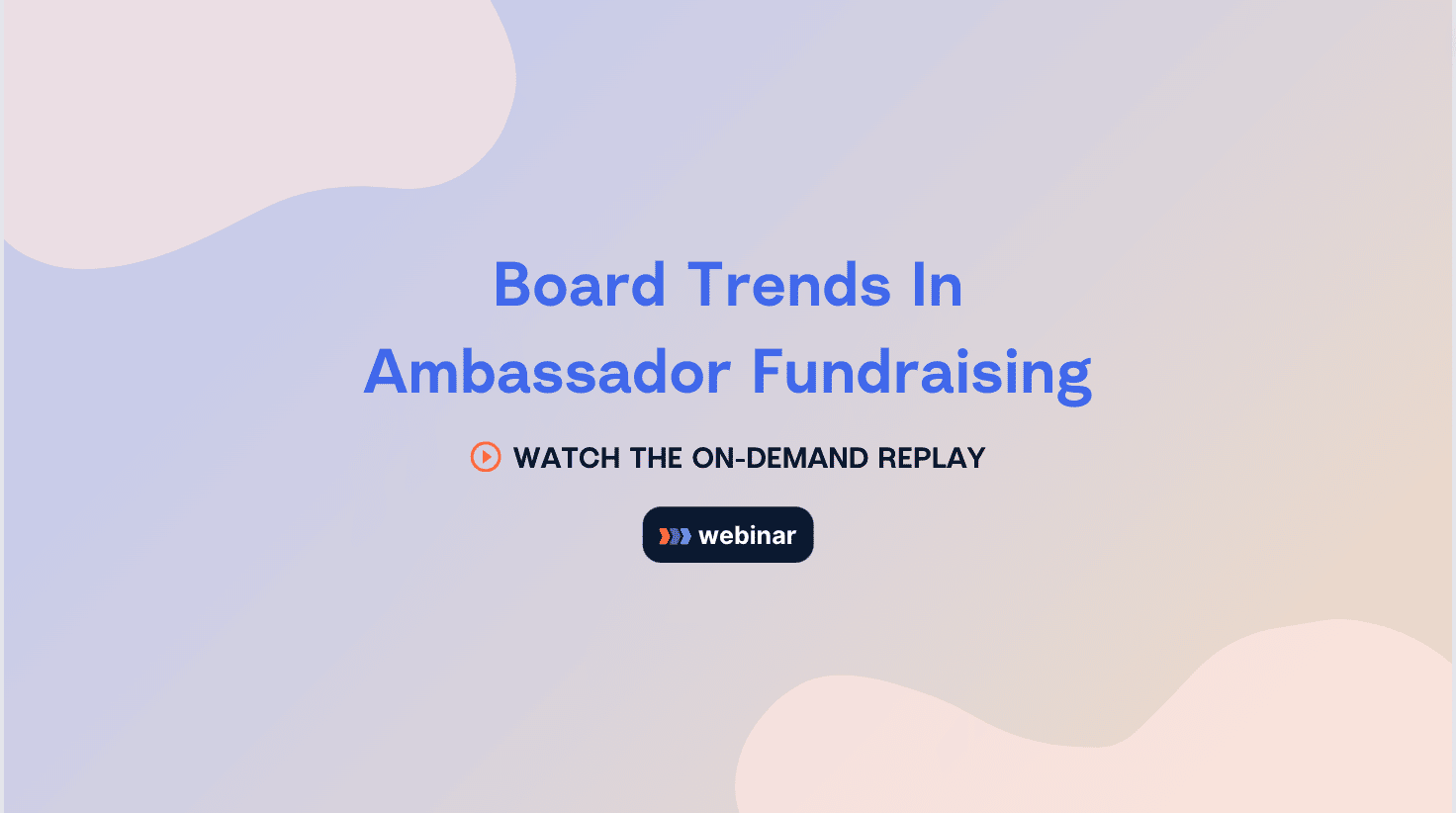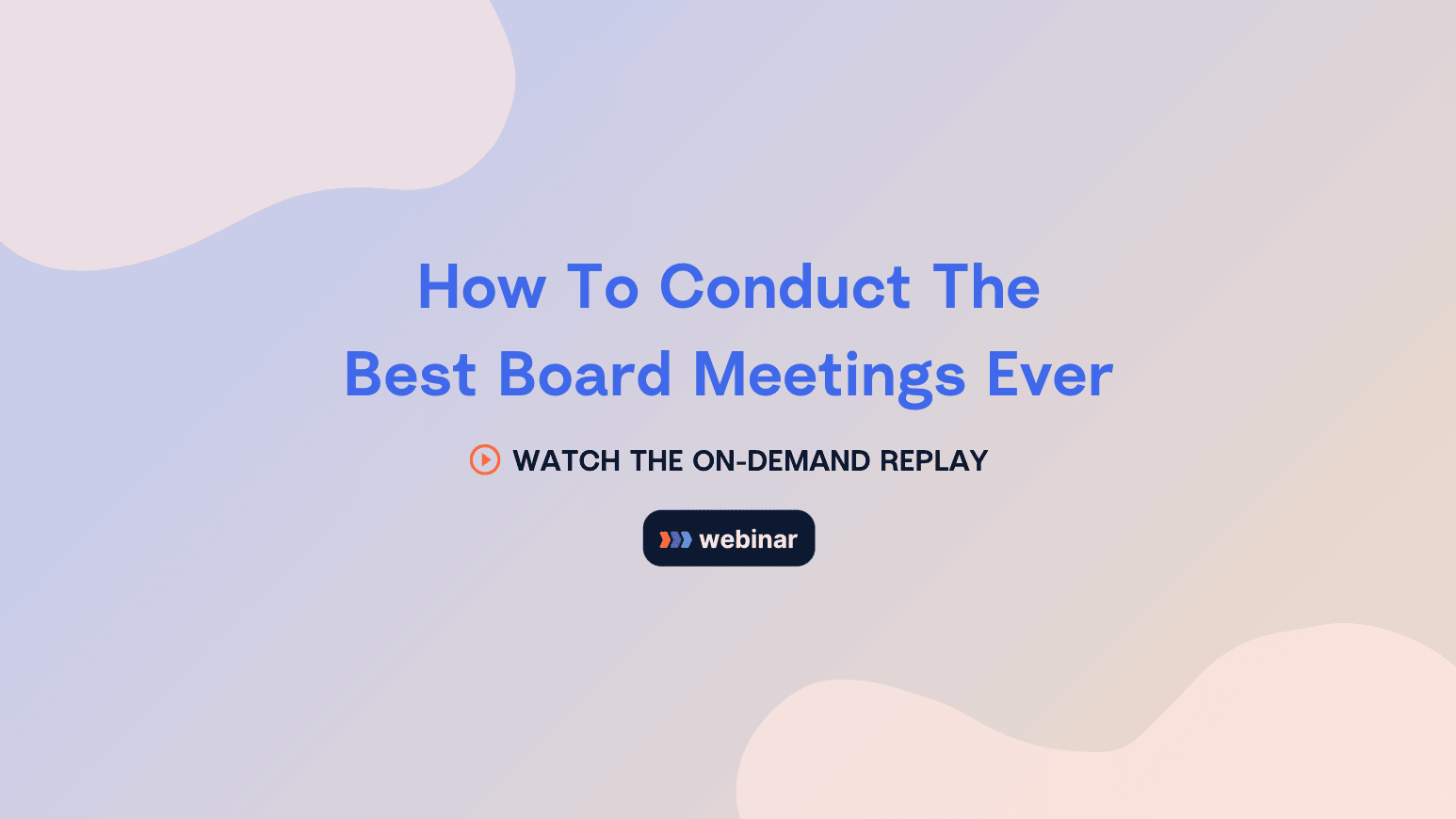Your board is an essential component of your nonprofit and provides much-needed guidance and insight. However, mistakes in nonprofit governance are serious and could end up harming your organization. From failing to fully understand the tax legislation and rules that a nonprofit must follow, to airing board grievances and divisions outside of the boardroom, there are major mistakes to avoid.
On the other hand, high quality nonprofit board governance done right has the ability to truly accelerate your impact. Let’s take a look at best practices in nonprofit governance, as well as common pitfalls to watch out for.
In this article, we will cover:
- What is the definition of nonprofit governance?
- What are the different models of nonprofit governance?
- Nonprofit governance best practices to follow.
- Nonprofit governance mistakes to avoid
- Conclusion & a free board oversight checklist
What is the definition of nonprofit governance?
Governance covers everything from financial viability of the organization to fulfilling its mission successfully. Nonprofit governance is defined as the process of providing strategic leadership to a nonprofit organization. It entails the functions of setting direction, making policy and strategy decisions, overseeing and monitoring organizational performance, and ensuring overall accountability.
What are the different models of nonprofit governance?
Each nonprofit has unique needs and challenges, which means each board is a little different. Additionally, a nonprofit may evolve over time. Perhaps when the nonprofit is founded, there are just a few board members to help advise the founder. Over time, more community involvement or fundraising may be required from the board. As long as the board composition adheres to the nonprofit’s bylaws, evolution and adjustment are not only common but necessary.
Here are the six basic types of board governance. For a more in-depth look at governance models, check out this blog post.
1) Advisory Model. This is great for that new nonprofit that needs subject matter experts to advise the founder.
2) Patron Model. Board members here aren’t expected to do much decision making, they are primarily well-connected fundraisers who can make introductions and. personal donations.
3) Cooperative Model. A less formal setup, all members have equal say. and there is no hierarchy. Members must be able to work well together.
4) Policy Governance Model. This format has committees for each area of operations, set up in formal managing groups.
5) Community Engagement Governance Model. This is a newer governance model that consists of involving input from the community about decisions for the nonprofit.
6) Hybrid Governance Model. Many nonprofits choose to combine two of these models to create something that works for their organization. For example, a board might have a Community Engagement Model as well as a Patron Model.
Nonprofit Governance Best Practices to Follow
Depending on your governance model and the needs of your organization, exactly how you run your board may vary. However, there are some best practices that apply to every nonprofit and can improve your efficacy. As with most board management areas, the key is planning ahead and being proactive. The more of these practices you can put in place, the more prepared you will be for whatever challenging circumstances arise
Survey your board about their needs
You can’t really know what your board members need to improve without asking them. What might seem like the best training or resource for them could be completely different from what they actually want. Oftentimes, board members want to do the right thing, but don’t have the time to ask for help or may not want to feel needy. By regularly surveying and assessing board member needs, you can proactively help these busy individuals do their best work.
There are a number of ways to survey board or staff needs. It doesn’t need to be a long questionnaire that takes forever to complete. Some of the best assessment methods are more frequent and take just a few minutes. Board governance expert Kim Donahue suggest the “Plus Delta Method.” At the end of every meeting, each attendee gets two post-it notes (or the digital equivalent). On the “plus” paper they write something that is working well or that they want to keep doing. Each person writes something he or she things should change on the “delta” piece. Another option is to ask a quick poll question digitally at regular intervals and see how people feel about specific points of operation. This can be done anonymously or openly, depending on the nature of the topic. For more information on other assessment options, check out our blog articles.
A crucial governance for nonprofits to master is to keep meeting minutes well organized, accessible, and accurate. Not only are minutes required for a legal record of the proceedings, they can add to the effectiveness of your team. When done properly, excellent meeting minutes help increase accountability between meetings, improve the quality of discussions, and set the stage for collaboration. Learn more about how important meeting minutes are in this guide.
Keep job descriptions up to date
Not all boards have current job descriptions for key leadership positions, including board members and staff, but they should. Good governance requires clear expectations and clear measurements of success for individuals. While most of the time we think of job descriptions as being important for hiring staff, they are equally important for board members. The best candidates can self-identify when they have a clear picture of what an organization is looking for in board members.
It may seem that the role of a board member doesn’t change much from year to year, but this is not always the case. As organizations evolve, perhaps between different governance models outlined previously, the most desirable traits of a board member evolve as well. Making sure that the job description accurately reflects the needs of the board is crucial to your succession plan.
Have a succession plan in place
The best governance habits imaginable are useless if they die as soon as a board term ends. It is crucial for continuity of all your hard governance work to have a robust succession plan, ensuring that good practices (and good board members) persist.
In the past, it was common for nonprofits to have a succession committee. This way of doing things is a bit outdated though, and most nonprofits now use the governance committee for succession planning. The most important aspect of a succession plan is that it begins the process of replacing outgoing board members with adequate time to fill the position with a quality candidate. Board member terms, other responsibilities (committee roles, advocacy positions, etc.), and officer positions should be well-documented and tracked ahead of time. This allows for the replacement board member to have time to learn from the outgoing director. Filling board positions should never be a reactive process, always proactive.
Have a board assessment plan in place
While regularly surveying your board about their needs is helpful, it also may be beneficial to plan periodic whole-board assessments. This can give you more in-depth information about how your board is functioning and what areas may need to be improved upon. A good time to do this is during or leading up to an annual retreat. Part of the assessment is reviewing parts of the strategic plan to discuss if the organization is still moving in the right direction.
Some of the questions you might want to ask as a board are:
- “As a board, what do we want to accomplish within one year?” List three or four priorities.
- “How do each of these priorities advance our nonprofit mission?”
- “At what intervals should we measure goal progress?”
- What is working, and what could change?
Assessments, whether accomplished by the board itself or an outside expert, help to keep governance on the right track.
Learn everything you need to know to provide a solid board governance framework for your team in our “Nonprofit Board Governance Guide: Everything You Need to Know.” Use this free ebook to harness your board’s strengths and improve on weak areas with actionable tips for strengthening governance.
Nonprofit Governance Mistakes to Avoid
Now that we have covered some best practices, let’s look at some governance mistakes to be vigilant about. From failing to fully understand the tax legislation and rules that a nonprofit must follow, to airing board grievances and divisions outside of the boardroom, there are major mistakes to avoid. Here are a few of the most common governance errors boards make (and what to do about them).
Avoid working with outdated governance documents
As time goes by, the mission for a nonprofit shifts and new practices will be implemented. In some cases, the board fails to update the actual governance documents to reflect the new priorities and practices. To prevent this, bylaws should be reviewed regularly and updated when changes are made. An annual review of governance documents to be sure the group remains in compliance is important. Verifying documents are up to date can prevent or correct this common issue.
Every time your board holds a meeting, follow the governance documents and rules for recording and reporting. If you have specific guidelines for recording minutes, record keeping, and order, follow them or amend them. Without accurate governance documents in place, your board could descend into chaos the first time you have a conflict that divides the members into more than one faction.
Measure engagement and maintain healthy levels
Boards are designed to provide focus and direction, but not at the expense of engagement and connection. Boards that exist mainly for the annual meeting and to provide direction, but that don’t get directly involved supporting the organization are missing out on valuable opportunities.
It is a common error. In most cases, the organization does need and benefit from direction, but taking things a step further and getting involved can help the group help its target population and meet its goals. Board members that assist with fundraising, make valuable connections, and are aware of events and operations are best able to help a nonprofit achieve its goals.
Make everyone aware of tax-related obligations
When you serve on a board, you have both responsibilities and legal requirements that must be fulfilled. Not every board member is a tax expert or attorney, but all should be aware of the implications of running a nonprofit. From salaries, to employees and contractors, to political lobbying, your board has specific tax-related obligations that must be complied with. Not being aware of these responsibilities could put your organization at risk.
Keep confidentiality
When the board makes decisions, they do so in private. Some decisions and plans are straightforward and everyone agrees. Others are more controversial and may be put to a vote. Both sides of a controversial or split decision need to maintain confidentiality about which members voted for which side. Breaking confidentiality can cause dissent and unrest for the organization and board. Confidentiality is also a must for the general plans and operations of the group. Sharing these things with outsiders could imperil the organization’s mission or reputation. Airing disputes or grievances outside the boardroom can damage the organization and cause strife with employees, too. Be sure to write this into your nonprofit governance bylaws, as stated above.
Prioritize diversity
Boards benefit best with a diverse mix of leadership. Some, however end up very heavy with professionals in the same industry or vertical. If your board is packed with CFO-level executives, your finances will be in order, but you won’t have insight into marketing, the local community, education, or technology.
Want an entire resource devoted to establishing and maintaining diversity on your nonprofit board? Download our free ebook, “Build and Recruit a More Diverse Board” and share it with your nonprofit leadership today.
Here are just a few facets of diversity to keep in mind:
- Racial, ethnic, and religious background
- Gender and sexual orientation
- Education and socioeconomic levels
- Professional skills and experiences
- Geographic representation
- Age and life experience
A diverse board is a thriving one, with more than a single background or point of view and some insights into your local community and the people actually being served. Therefore, if your board all looks alike or shares a very similar resume, it is time to diversify.
While each of these governance mistakes is common, they are also easily remedied. Reviewing your board for one or more of the issues above can help keep things running smoothly and ensure that the groups is able to do its best work for your brand.
Conclusion
It may not be as heartwarming as your mission or as exciting as a lively board discussion, but healthy board governance is crucial to achieving results for your organization. By setting this groundwork early and persistently, everything else your board or staff wants to do will be more efficient, fair, reliable, and simple. Your nonprofit and your community will see the benefits from your good nonprofit board governance practices.
Ready to take your nonprofit board governance to the next level? Book a demo today with one of our product experts.




